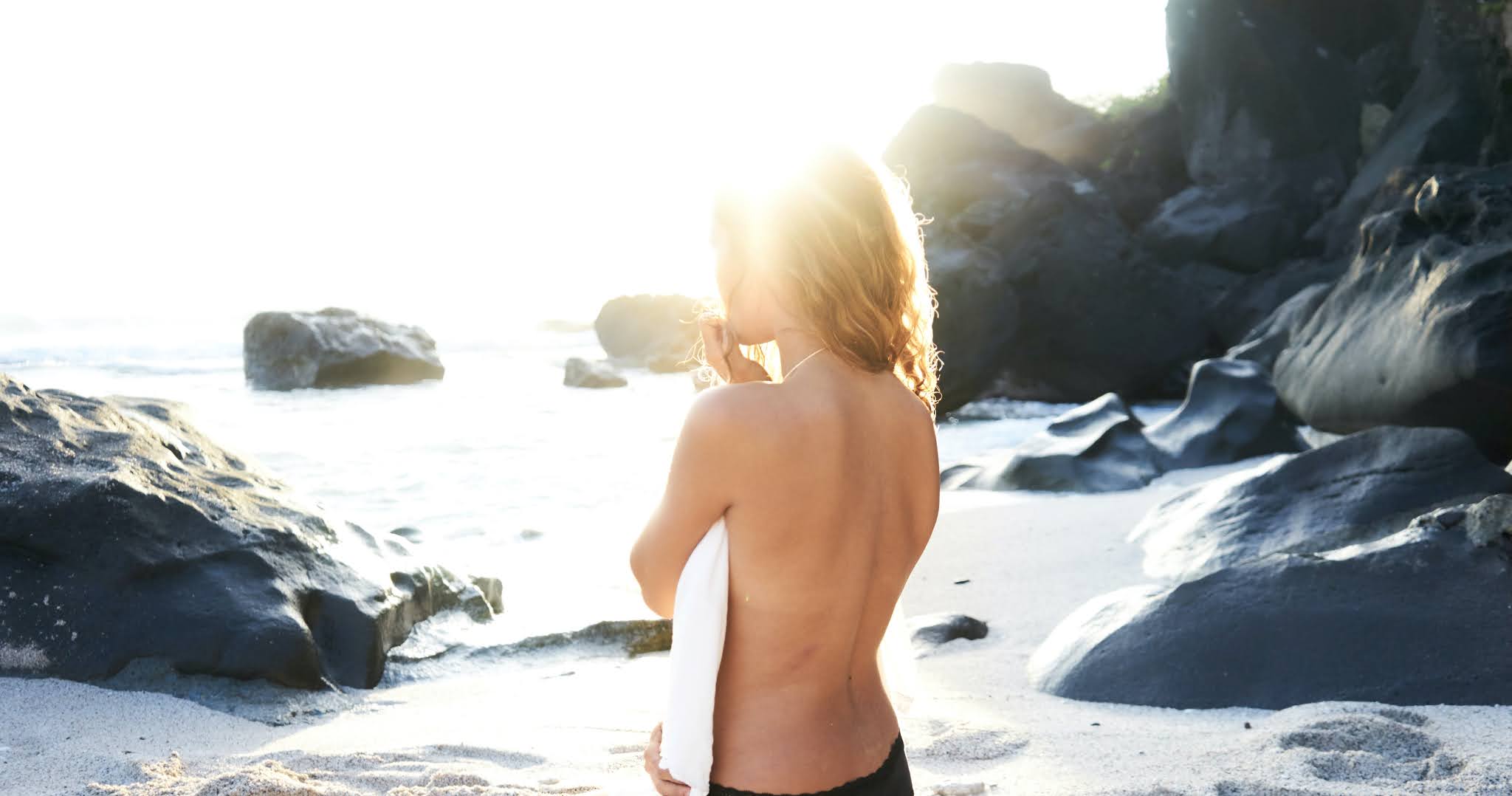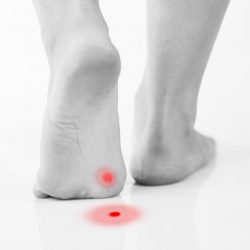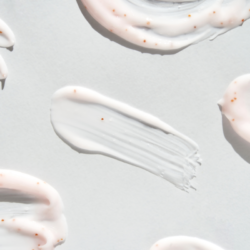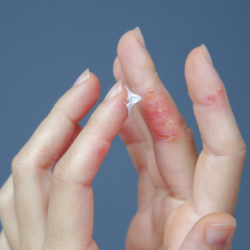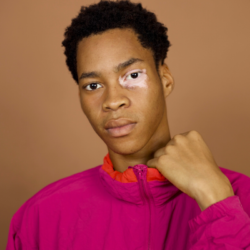Our natural way of life is to live outdoors, and therefore to be exposed to the sun, according to the fluctuations of the seasons; our skin is able to adapt, brightening when we lack sunlight, to let UVB (ultraviolet B rays) pass through. When UVB rays hit the surface of your skin, your skin converts a cholesterol derivative into valuable vitamin D3.
The epidermis of the skin :
The epidermis is divided into 3 layers: the stratum corneum, the basal layer and the stratum spinosum (this layer reacts to external stresses).
This last layer contains the melanocytes which on exposure to the sun produce melanin which releases 2 types of pigmentation :
- Eumelanin (for dark to dark skin) Eumelanin plays an important protective role by absorbing light photons and free radicals. Thus the epidermis will resist solar aggression the more it is more pigmented.
- Phaeomelanin (for fair skin)
Phaeomelanin has poor sun protection skills and is toxic to cells.
The main cells that make up the epidermis are keratinocytes, melanocytes and Langerhans cells. Their essential function is to produce a brown or red pigment; melanin.
The effects of the sun on the skin :
-
The effects of the sun on the skin
These effects are generally beneficial. However, the caloric action is due to infrared rays which penetrate deep into the dermis where they cause vasodilation and an increase in skin temperature. The sweat secretion, by a reflex mechanism, will make it possible to regulate this variation of local heat. When these thermoregulatory mechanisms are saturated, there is a risk of sunstroke and heat stroke.
The other beneficial effect is related to the synthesis of vitamin D which occurs by photo-conversion of a cholesterol derivative located deep in the epidermis. UVB rays are mainly responsible for the skin synthesis of this “sun hormone”. This has multiple functions, the most important of which is related to bone remodeling. A 15-minute solar exposure in summer around noon covers this need.
-
Delayed effects
Sunburn or actinic erythema :
The redness of the skin after sun exposure will depend on the intensity and duration of irradiation as well as the individual susceptibility defined by the phototype. Dark-skinned dark-skinned will blush little and tan quickly while fair-skinned ones will tan less and be more susceptible to sunburn. It is UVB rays that are responsible for actinic erythema. UVA rays can also make you blush, but at doses a thousand times higher.
However, exposure rich in UVA (late afternoon sun) can worsen a sunburn received at noon. The lesions observed mainly concern the epidermis and are associated with a dilation of the vessels of the dermis. Under the microscope, cells in the epidermis have started their cell death program (apoptosis). These dying keratinocytes are detectable from the first day after sunburn.
-
Long term effects :
The effects of UV are dose dependent and cumulative; repeated and prolonged exposure can be responsible for cancer and skin aging.
Photo-induced skin aging :
It is observed on exposed regions (face, neck, nape, décolleté and back of the hands) and is superimposed on intrinsic aging linked to age. It is a function of the cumulative doses and of the phototype, subjects with fair skin being more sensitive to this type of aging. The skin is dry, wrinkled and dotted with dark spots. It is thickened, takes on a yellowish color with enlarged pores making it look like a lemon peel.
The sides of the neck can sometimes take on the appearance of permanent chicken skin or goosebumps. Under the microscope, the epidermis is thinner and the elastic tissue is deeply reshaped. All these modifications are essentially dependent on UVA and visible radiation.
Some naturopathic tips to fully enjoy the benefits of the sun without risk for the skin :
The only real advice to give about the sun is common sense: adapt gradually!
-
Prepare your skin for sun exposure:
To meet the needs of skin exposed to the sun, NHCO laboratories have developed a self-tanner that contains the active ingredients necessary for :
-
- Stimulate tanning
- Have a harmonious tan
- Avoid redness and sunburn
- Protect from DNA lysis
- Promote the protection and repair of the skin
- Provide hydration and nutrition
- Prevent the appearance of spots
It is a real innovation in the world of solar preparations, it is the first supplement that adapts to the phototype of your skin for an optimized result and a sublimated tan.
Thanks to its self-tanning pigments, it does not boost melanin. It contains amino acids for the immune response of melanocytes, marine collagen to prevent skin aging, borage oil to keep tan and nucleotides to balance apoptosis and repair damaged cells.
-
Have vitamin D reserves :
Having optimal stores of vitamin D offers countless benefits. In particular, it causes a significant decrease in the risk of cancer, including that of skin cancer. Conversely, if exposure to the sun is strong, our skin turns brown to limit the entry of UVB rays. However, if for weeks you have been living indoors, or in an area with little sunlight, then you will need to gradually adjust to regaining the sun.
A good tan is a sign of a good level of vitamin D. At the start of sun exposure, as soon as your skin starts to turn pink, you reach the point of equilibrium: your body will not be able to produce more vitamin D In this way, you manufacture up to 20,000 IU (international units) of vitamin D per day, and this in complete safety because you have a biological feedback system that prevents you from overdosing.
By exposing yourself in this way on a daily basis, you can gradually increase your exposure time. A moderate, natural tan is a visible sign that your vitamin D levels are optimal.
-
Avoid excess sun :
Abrupt and excessive exposure to the sun does not provide any health benefit. It causes sunburn, which is an inflammatory reaction of your skin to excess ultraviolet rays. If you are no longer used to the sun, start by exposing yourself in sessions of 10 to 20 minutes, depending on the location and the amount of sunshine (clouds or not), on at least 40% of your skin. If you are white in skin, your goal is for your skin to turn a light pinkish color.
Stop just before:
Your skin becomes hot or burning to the touch
You have a feeling of discomfort when you touch your skin or when it rubs your clothes
That’s why the best way to start is simply to measure the time you expose yourself. If you sunbathe on a clear cloudless blue sky day, between 11 a.m. and 4 p.m., only expose yourself for 10 minutes on your stomach, then 10 minutes on your back. Your goal is to avoid burns, blisters or even peeling skin.
People with very dark skin can ultimately spend hours in the sun without worrying about a burn. But for most of us in Europe, the maximum exposure time, after getting used to it, is about an hour, after which you have to protect yourself with shade. Also note that the skin on our face is very thin, therefore fragile, and that it is important to wear a hat to avoid damaging it. The hat will also limit the risk of sunstroke.
-
The different types of burns :
As with normal burns, sunburn is classified into three degrees (first, second and third degree burns). First degree burns can be treated at home. Those of the third degree cause blisters, sores that can become infected, fever, chills, and a doctor should be consulted immediately.
-
Before the exhibition :
Eat fresh vegetables and colorful berries! The more antioxidants you consume, the faster your skin will adapt to the sun. You will reduce your risk of burning by eating vegetables and fruits rich in carotenoids, red-orange pigments that you find in apricots, carrots, but also green vegetables.
Vitamin C will fight free radicals and inflammation caused by the sun’s rays.
Also protect your skin with natural sun protection. For this, we offer you high protection without chemical filters from the Alphanova Sun brand. Rich in aloe vera, jojoba and tamanu oil, this sun care is effective immediately after application. Formulated without alcohol, fragrance, phenoxyethanol or parabens, it is particularly respectful of the delicate balances of the epidermis. Containing only mineral filters with particles greater than 100 nanometers, without risk of pollution for the marine ecosystem, Alphanova Sun Bio SPF50 + UVA UVB Spray is a face and body sun lotion adapted to protect the most fragile skin only developed with filters non-nano minerals, suitable for the whole family.
The exclusive formula of this protection is 100% natural, it can be used in water without creating pollution for the environment (coral reefs, fish or shells…).
-
Before, during and after the exhibition :
Drink plain water regularly, free from sugar, dyes, etc. Your skin needs to be well hydrated, and when exposed to the sun it dries out without you even noticing. It then becomes much more fragile.
-
In case of burn :
Apply aloe vera gel to your skin to minimize damage and speed healing. Aloe vera is the natural protective skin care par excellence. In many places, for example the shores of the Mediterranean, you can find aloe vera growing in the wild.
Sources :
- Meynadier J. Précis de physiologie cutanée. Ed de la Porte Verte, 1980.
- Meynadier J, Meunier L. Peau et soleil. Ed Privat, 1999.
- Jeanmougin M. Photodermatoses et photoprotection. Ed Deltacom.
- Béani JC. Notions fondamentales de photochimie. Société Française de Photodermatologie. Photodermatologie. Ed Arnette, 13-22, 2008.

